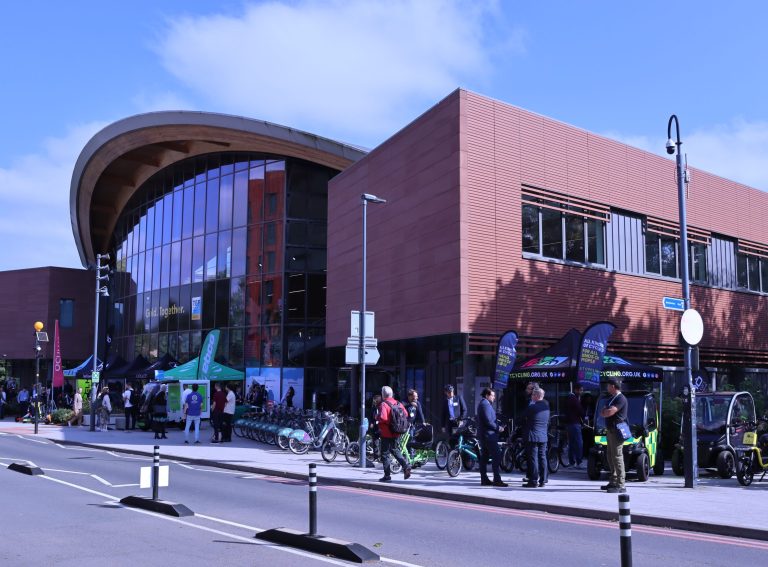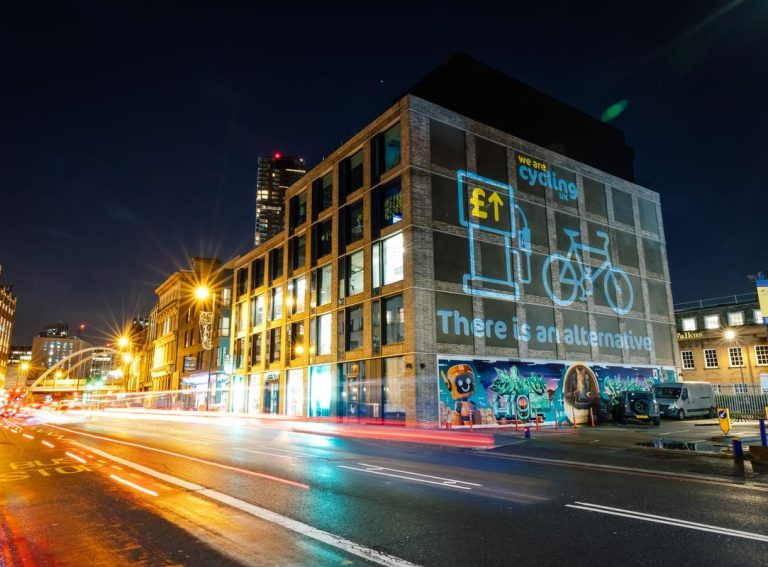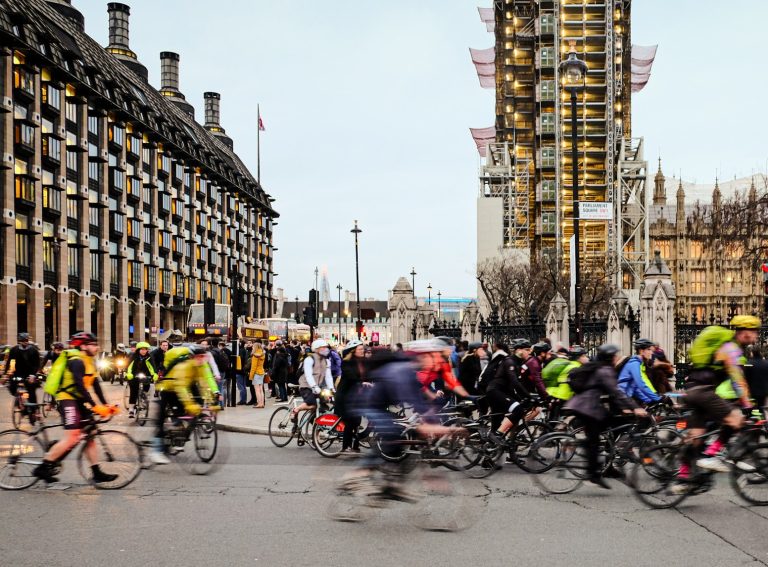While shared e-scooters didn’t actually get started in the good old US of A, it’s American companies that have quickly come to dominate the industry. The country’s active venture capitalist industry has fuelled fast growth, and large-scale operations have appeared in many American cities over the past four years, chiefly led by Bird and its fierce rival, Lime.
NABSA (the North American Bicycle Sharing Association), which represents shared e-scooter operators, recently published an industry-wide report, looking at just how significant e-scooter sharing is across the pond. We’ve had a browse around their data and compared it with early numbers coming out of our nascent industry here.
Totalling scooters and operators
The first thing to bear in mind is that it is still very early days in the UK. The law only changed in July and most live trial programmes have been switched on for less than a month.
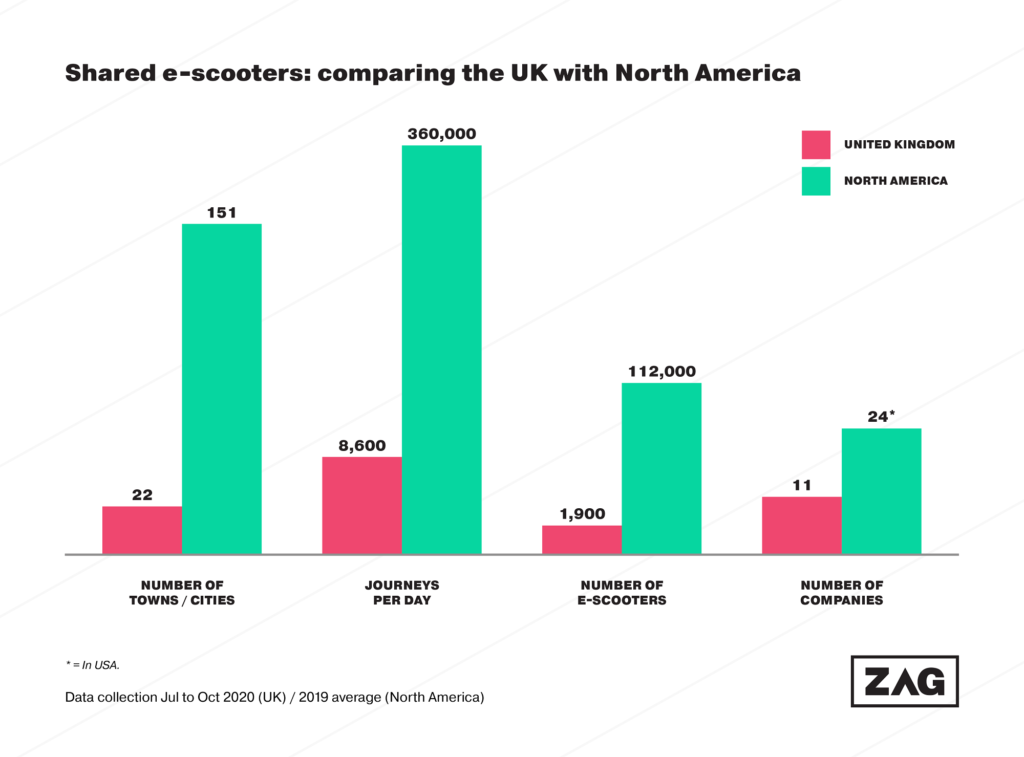
There’s a smidge fewer than 2,000 e-scooters available on streets to hire, split across 11 companies running 24 fleets in 22 towns and cities, all in England. That’s small compared to the US but it’s a strong start, nonetheless.
Northampton, Milton Keynes and Slough are the only locations with fleets of more than 150 available vehicles, although we expect Liverpool, Birmingham and Coventry to hit this milestone soon. There are still an estimated 10 or so fleets to launch this year here, although London at least will have to wait until 2021, due to its uniquely complicated stakeholder situation.
Examining daily journeys by vehicle
Operations here large and small are reporting good numbers for the crucial “journeys per vehicle per day” metric (j/v/d), which measures how well each scooter is being used.
Yeovil’s tiny fleet of Zwings scooters exceeded 4 j/v/d in the first five days of the trial. Coventry was flying at 7 j/v/d for its first five days, before the scheme was paused (though we believe it’s about to restart). Many other locations have reported between 3 and 9 j/v/d – all great numbers and generally well ahead of bicycle-share systems.
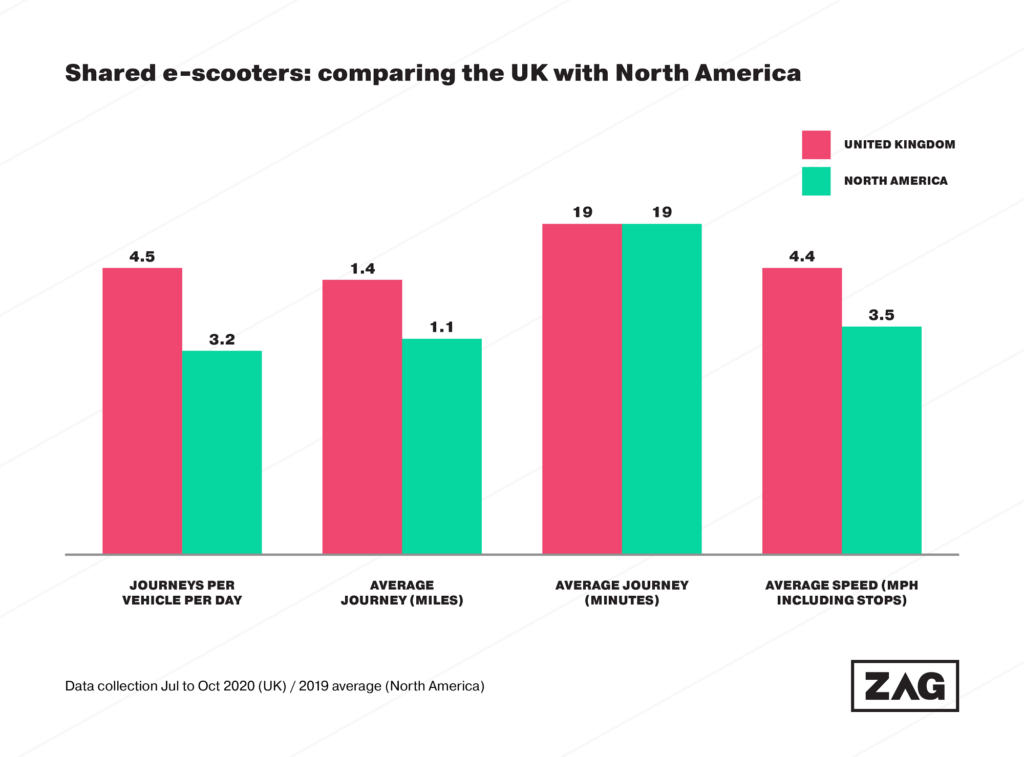
By my very rough, back-of-the-envelope calculations, we’ve had somewhere between 150,000 to 200,000 journeys on e-scooter sharing fleets so far across England, since Ginger launched in Middlesbrough in July.
As fleets launch and grow, my estimate is that there are now nearly 10,000 journeys a day being taken on shared e-scooters in the UK, or around 300,000 a month. (We’ve assumed an average of around 700 scooters available daily for the last couple of months, each with around 4.5 journeys recorded per day.)
In the US, the scale is on a different planet. NABSA’s 2019 report calculates there were 88m shared e-scooter journeys, across an average of 112,000 vehicles in 151 cities, in the US, Canada and Mexico. The average j/v/d was 3.2, and the average journey was 1.1 miles and 19 minutes.
The Covid caveat
It should be noted that the North America data is from 2019 – that is, pre-coronavirus. It is certain that the pandemic has impacted operations there. The bicycle sharing provider Zagster went into liquidation shortly after the start of the crisis. Many e-scooter sharing services will have initially suspended their service, before coming back with new cleaning regimes and stocking procedures designed to keep users and operational staff safe.
As such, it is likely that, unlike the stellar growth seen from 2018 to 2019, 2020’s data will show a largely flat population of e-scooters and journeys, or possibly even a slight fall.
In general, however, there’s a distinct lack of widespread operator closures in North America, beyond the normal churn and consolidation of a burgeoning industry. This suggests that pandemic has not been fatal for an industry that provides socially-distanced personal transport (something now in huge demand), albeit shared across the day.
Indeed, the two largest closures, of Zagster (whose assets were acquired by Superpedestrian, to create Link) and Uber’s Jump (now integrated into the Lime platform) were both companies that provided electric bicycles, not e-scooters. The pandemic may have served to accelerate a transition away from less-profitable bicycle sharing systems to simpler, more popular and more profitable e-scooters.
In the UK, the trials were in fact expanded to cover the whole of England, and brought forward, in response to the impact of the pandemic on travel options and the desire to provide alternatives to a car-dominated recovery.
Our strict regulatory structure and the limited timeframe of the trials (which mainly conclude next year) means that we are unlikely to see systems as large as those in many US cities, but it is still early days for the industry here.
British fleets may be small, but they are being well used and offer real potential to clean up our transport landscape in a fun, friendly, accessible and affordable manner.


